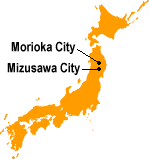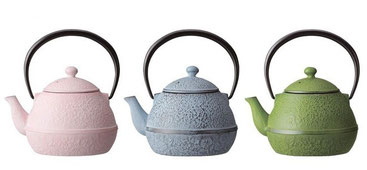NANBU TEKKI / NANBU Cast Ironware

Japanese handmade crafts have always received international acclaim for their fine quality and simple beauty.
Japan's long tradition of crafting everything like swords, cutting knives, ceramics , fabrics or woodwork has had a tremendous influence on the world in area as distinct as cooking and design. Nanbu Tekki is an example of one such craft.

Meaning literally Iron of NANBU Clan in Japanese, Nanbu Tekki is made through a 400-year old technique developed in the Iwate Prefecture of Japan. The crafting of tea kettles, weapons and armor began in the city of Morioka when iron casters and craftsmen from Kyoto started their work in this iron-rich region. The local deposits of ore, clay and charcoal created an ideal condition for the development of the craft in this area, and the technique has taken over in the cities of Morioka and Mizusawa in the centuries since.
More recently, Nanbu Tekki has received a renewal of interest throughout the world as the demand for natural and handmade products has increased. From tea salons in France and Belgium began use of Nanbu Tekki, demand for these modern & colored designed tea kettles became very popular throught all over Europe. In turn, within Japan itself.
The craft also has some positive health effects. Drinking water boiled in Nanbu Tekki has milder taste and supply us efficient iron supplementation. These facts made Nanbu Tekki more common in Japanese daily life.
manufacture; OIGEN Cast iron works, Iwate/Japan

Since 1862, Oigen have been making Tetsubin (iron tea pots) in the city of
Morioka in Iwate prefecture. They are one of the most famous and respected manufacturers of Nanbu ironware, and are renowned for making Tetsubin of superior quality and beauty.
Today, the craftsmen of Oigen respect their old tradition:
Each teapot is infused with the same precision craftsmanship at each stage of the long and complex manufacturing process, which consists of 64 to 68 different steps, most of them are still undertaken by hand. The whole process is controlled by a master craftsman known as a "Kamashi", who makes sure that quality is never compromised.

